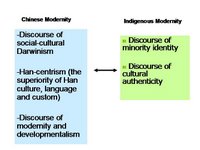[Week 13/ Special topic: Culture and Development]
1. Karl Polanyi (1886-1964): The Great Transformation
1.1. Critique of theories about "self-regulating market"
1.2. What is "self-regulating market" theories
-The basic assumption: “Market is governed by the natural law”:
-It follows its law without intervention.
-It is a price mechanism perpetuated by demand and supply.
1.2. From anthropological perspectives, markets were/are always embedded in social institutions.
1.3. Self-regulating market as a fictitious and fabricated reality
-England in the 18th Century.
-Enclosure movement
-Proletarianization
-The "self-regulating market" was not a reality but an utopia for which the government devised a set of state policies attempting to create the conditions.
1.4. "Free trade" as a fictitious and fabricated reality (WTO)
-Free trade for big corporations: Tariff is the major barrier preventing multinational companies from trading goods.
-The US and European governments have been highly subsidizing agricultural export (e.g. cotton) while they keep forcing the Third World to reduce tariff and subsidies.
-Not free trade for small producers: They come across a wide range of barriers (urban development, transportation, "dumping", ... )
1.5. An institutional approach
1.5.1. Three types of material flow:
-Redistribution (e.g. tax and welfare, family expenses)
-Reciprocity (e.g. gift exchange)
-Exchange (calculative transaction)
(Market exchange is only one of the three types of material flows)
1.5.2. Economic activities and social institutions
-Economic activities not only aim at material accumulation and satisfaction but also provide functions for various institutions.
-Examples:
Common land (economy and religion)
Gift economy
1.5.3. Economic activities and symbolic practices
Example of "culinary authenticity": Raw seafood in Japan
2. Critique of economic activities as cultural practices
2.1. Economic activities justified by economic concepts (ideology)
-The myth of market (as a law, as a reason, as the highest value, as a moral standard)
-A reason or a natural law: "The income of our janitors is so low because this is determined by market"
-A kind of moral value:
"Students and the janitors should not ask for rise of wage because market should not be destroyed."
"Intervention into the market is injustice"
2.2. Critique of Developmentalism
2.2.1. The basic premises of developmentalism
-Civilized and uncivilized (19th century)
-Developed and underdeveloped or developing (20th century and after)
2.2.2. Development is supposed to be the ultimate reason for all problems.
-Development is supposed to be the ultimate solution.
-Example: “Food crisis” (Amartya Sen)
2.2.3. Development organization
-IMF, World Bank, … …
-Development project and aid
-Development economics and other sub-disciplines
2.2.4. Making “development” visible
-Category (peasant, women, … )
-Index (GDP)
-Statistics
2.2.5. Economic activities are not necessarily assessed by development index
-Marshall Sahlins: The original affluent society
-Myth: Hunters and gatherers sufferred from hunger and lack of food
-Hunting and gathering economy is quite affluent.
-No wealth accumulation
-Mobile movement
-Cherishing leisure time
-The assessment of economic activities should not be only based on material accumulation
3. Critique of the conventional belief of the western-modern society



